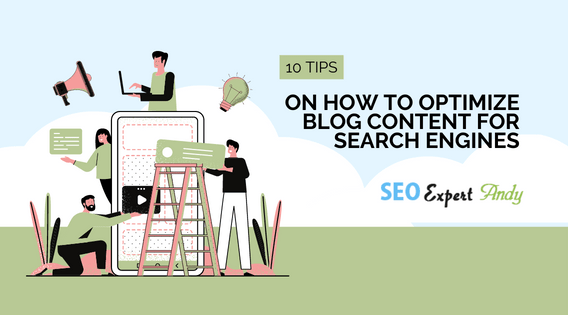What is blog SEO?
Blog SEO is the process of optimizing blog content to improve its visibility and ranking in search engine results pages (SERPs). It means implementing strategies and techniques to attract organic traffic and increase the visibility of the blog so it can be discovered by search engine users. Blog SEO includes activities such as conducting keyword research, optimizing titles and meta descriptions, creating high-quality and valuable content, structuring posts with proper header tags, utilizing internal and external linking, optimizing images and multimedia, improving page loading speed, and promoting social sharing. By focusing on the best practices, bloggers can enhance their blog’s online presence, reach a wider audience, and generate more organic traffic.
How do you optimize your blog content for search engines?
Creating engaging and valuable content is just the first step to a successful blog. To maximize its reach and impact, you need to optimize your blog content for search engines. Search engine optimization (SEO) plays a vital role in improving your blog’s visibility and organic traffic.
Explore ten essential tips on how to optimize your blog content to boost its search engine rankings and attract more readers:
1: Conduct Thorough Keyword Research
Effective keyword research is the basis of any successful SEO strategy. Identify relevant keywords and phrases relevant to your blog’s topic and target audience. Use keyword research tools like Google Keyword Planner, SEMrush, or Moz to discover high-ranking keywords with reasonable search volume and low competition.
2: Craft Engaging Titles and Meta Descriptions
Titles and meta descriptions are crucial for attracting search engine crawlers and online readers. Optimize your blog post titles, include relevant keywords, and make them attractive to readers. Write brief and informative meta descriptions that accurately represent your blog content. And include relevant keywords to enhance click-through rates from search engine results pages.
3: Write High-Quality, Valuable Content
Search engines give priority to high-quality content that offers value to readers. Create comprehensive, well-researched, and informative blog posts that deal with your audience’s needs and queries. Focus on providing unique insights, actionable tips, and practical solutions. Well-written and engaging content is more likely to be shared and linked to, boosting your blog’s visibility.
4: Optimize Header Tags and Structure
Structure your blog posts properly by using header tags (H1, H2, H3, etc.) and improving readability. Place your main keyword in the H1 tag, and use subheadings (H2, H3, etc.) to break down your content into sections. It helps search engines understand your blog’s structure and improves user experience.
5: Optimize URL Structure
URLs should be concise and descriptive, with appropriate keywords. Avoid long and complicated URLs that are difficult to understand or remember. Ensure your URLs are static and use hyphens to separate words.
6: Internal and External Linking
Use internal linking to connect your blog to other pages. Internal links help search engines discover and index more of your content, while external links indicate that your blog is a valuable resource. Use anchor text that includes relevant keywords to provide context for search engines.
7: Optimize Images and Multimedia
Images and multimedia elements not only enhance the visual appeal of your blog but also provide an opportunity for optimization. Optimize image filenames, alt text, and captions with descriptive keywords to help search engines understand what the image represents. Compress images to improve page loading speed, as it is a crucial factor for search engine rankings.
8: Improve Page Loading Speed
Page loading speed is a significant issue for search engine rankings. Optimize your blog’s loading speed by compressing images, minimizing code, leveraging browser caching, and using a content delivery network (CDN) if necessary. Test your website’s loading speed regularly using tools like Google PageSpeed Insights or GTmetrix.
9: Optimize for Mobile Devices
Mobile optimization is no longer optional, but mobile devices play a significant role in web traffic. Ensure your blog is responsive and displays properly on various screen sizes. Use responsive design principles, avoid disturbing gaps, and optimize font sizes and button placements for easy mobile navigation.
10: Promote Social Sharing
Encourage readers to share your blog posts on social media platforms by integrating social sharing buttons. Increased social media shares contribute to improved visibility and potential backlinks, which are important ranking factors for search engines. Make it easy for readers to share your content by placing social sharing buttons prominently within your blog posts.
Also, Read
20 Effective Content Ideas for Your Blog and Social Media
Optimizing your blog content for search engines is crucial for driving organic traffic and expanding your audience. Blog SEO optimization is essential for increasing organic traffic, improving user experience, building brand awareness, achieving long-term results, gaining a competitive advantage, and driving user engagement and conversions. It is a fundamental strategy that helps your blog reach its full potential and maximize its impact in the online world. By implementing these ten tips, you can significantly improve your blog’s search engine rankings and increase its visibility among your target audience.
